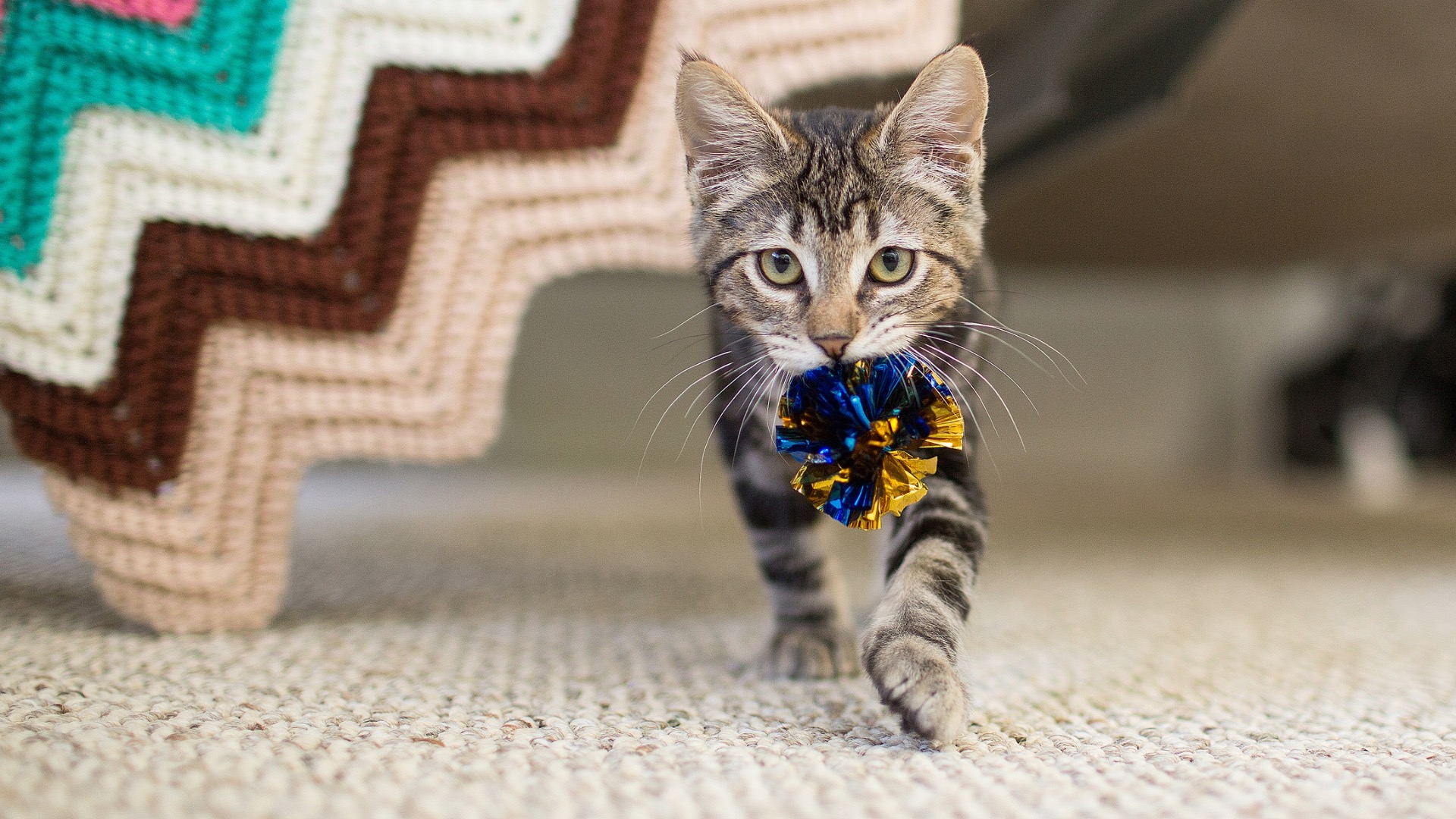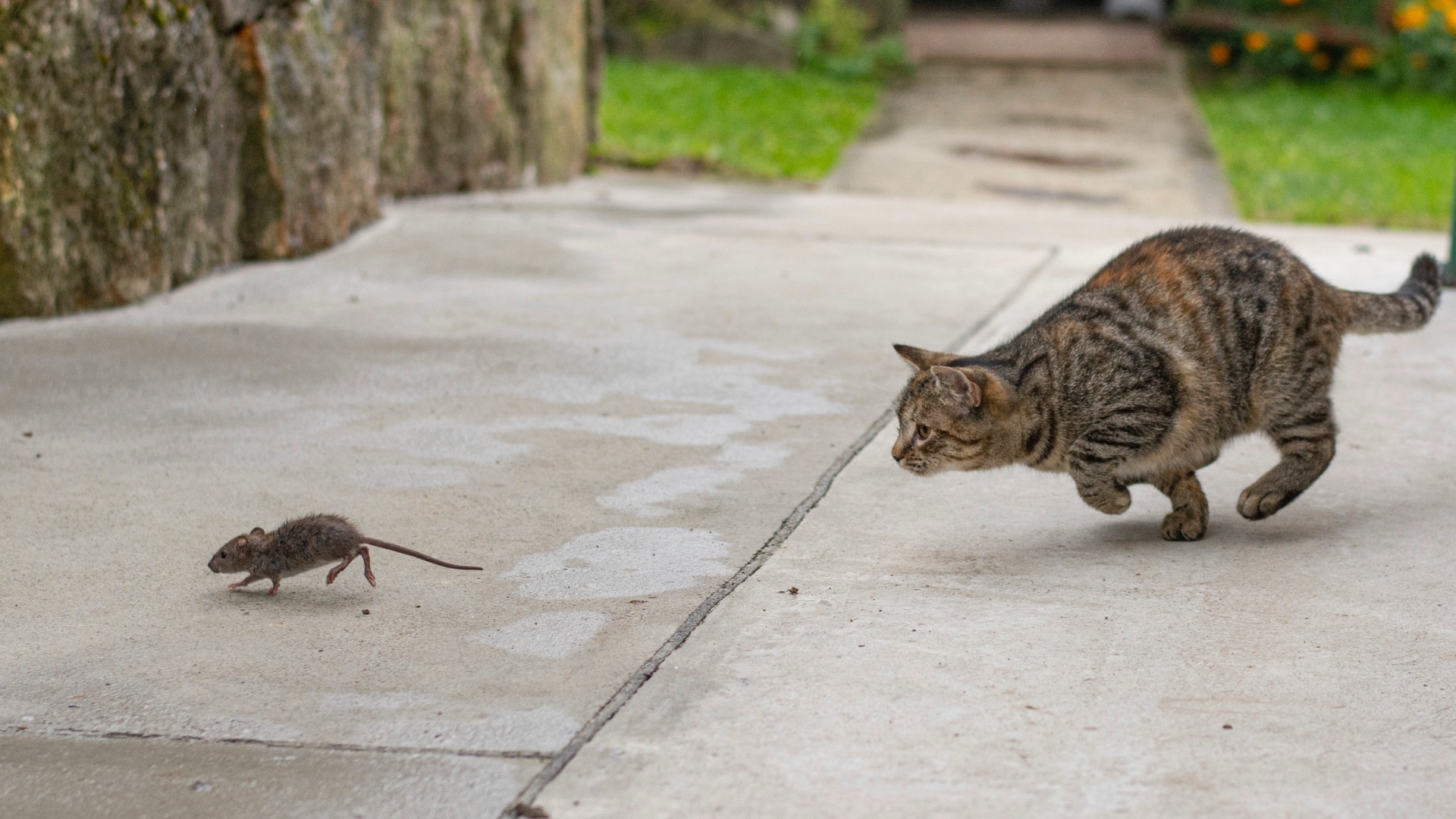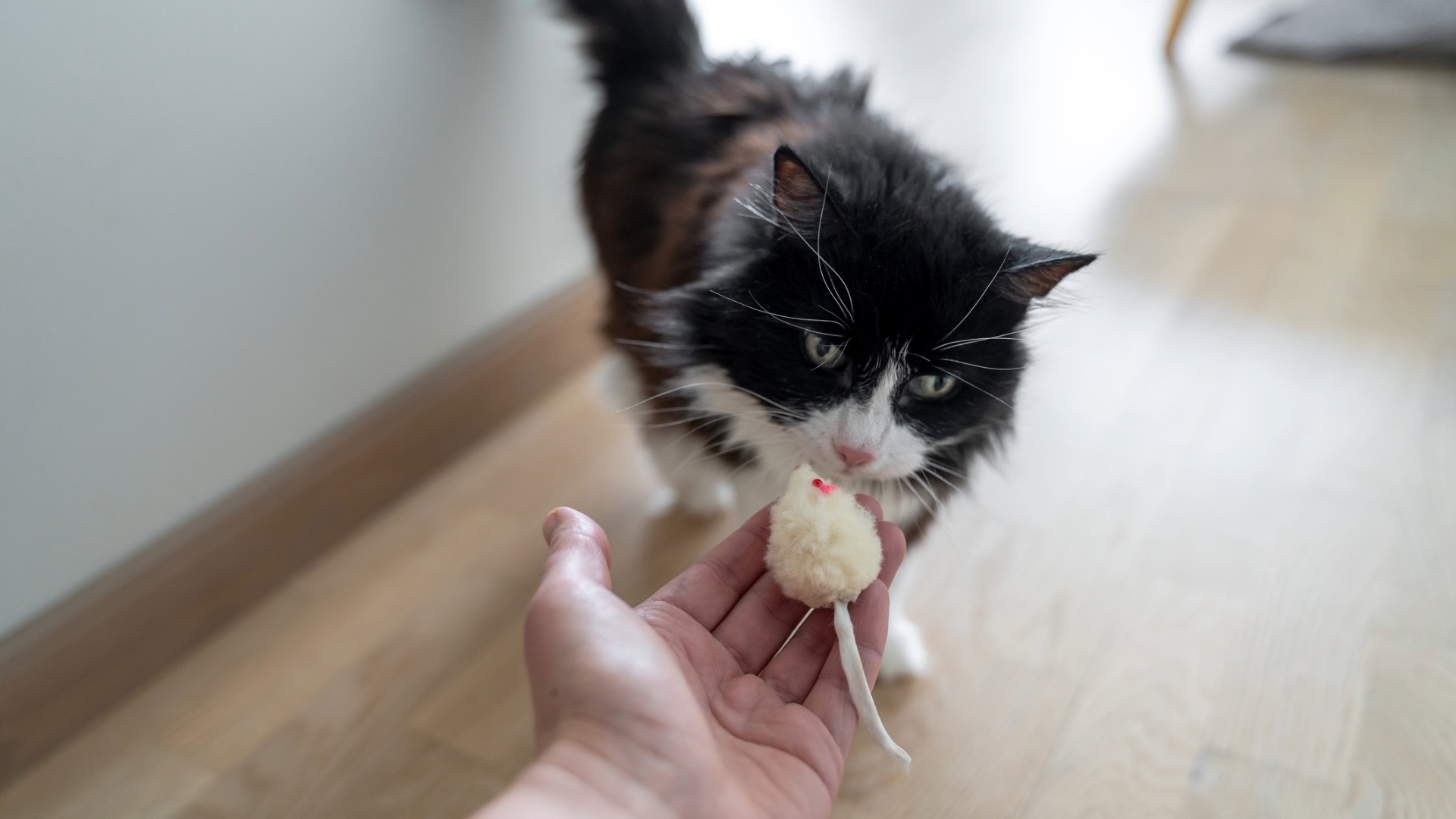
Can cats play fetch? It’s one of the most popular games to play with a dog, but far fewer felines chase and retrieve objects thrown by their pet parents.
Unlike dogs, cats haven’t evolved to cooperate with humans or been bred specifically for their retrieving ability. However, you might be surprised at their potential for playing fetch. But do they enjoy it and what are the benefits? Read on to discover why playing fetch can be fun and rewarding for both of you.
If you’ve ever praised and petted your feline friend when they’ve brought you a toy, you’ve inadvertently reinforced this behavior, making it more likely to happen again.
We reveal how to use positive reinforcement training, the best cat toys and the best interactive cat toys to unlock the fetching potential of your purring playmate.
Can cats play fetch?
Can cats play fetch? While it’s not a common behavior, a study published in the Scientific Reports journal reveals that more cats engage in this game than you might imagine.
Are cats playful in the same way as dogs? Researchers discovered that cats prefer to play fetch on their terms, initiating play with their guardians and deciding when to end the game. Perhaps unsurprising, given their independent nature.
Incredibly, 94% of the pet parents surveyed reported that their cats began playing fetch without any training or prompting. But don’t despair if your kitty doesn’t fetch, as it is possible to train this behavior.
As solitary hunters, cats instinctively chase after rodents, birds, reptiles, and insects, and pick up captured prey with their mouths, often bringing their catches home to their human companions.

The initial stages of a game of fetch mimic this innate predatory behavior, so cats may be motivated to play due to their predatory instincts. Has your kitty ever dropped one of their favorite toys at your feet? The only remaining component of the fetching behavior is for you to toss it and encourage them to bring it back.
Both mixed and purebred breeds will retrieve objects with siamese, Burmese, savannah, and maine coon cats often reported to be particularly enthusiastic fetchers.
Social play is most common in young animals and researchers found that cats that played fetch were more likely to start when they were under a year old.
Whether or not your feline friend enjoys playing fetch will also depend on their personality and preferences. Not all cats are naturally inclined to play fetch, but many can be trained to enjoy participating in this activity with their human companions.
Do cats like to play fetch?
Some cats find chasing and retrieving objects extremely rewarding, whilst others show little interest, preferring other forms of interactive play. Researchers found that many cats were only interested in fetching one specific toy or type of household object, or that they would only retrieve items for a certain person or at a particular time of day.
For some cats, the thrill of the chase will be more rewarding than the act of retrieving and returning a toy to you. The most important thing to remember is that cats like to feel that they’re in control, so be receptive to your kitty's needs and preferences.
Like all forms of cat play, playing fetch has a host of benefits for your feline friend. Fetch stimulates a cat’s natural hunting instincts, providing them with an opportunity to engage in the stalk, chase, pounce, and bite stages of the predatory sequence.

Learning to fetch requires them to focus, track and retrieve an object, which can help to keep their mind active and prevent boredom. It’s also an excellent way to encourage your kitty to get more exercise.
Running after and pouncing on a toy will help your feline friend maintain a healthy weight, preventing obesity and promoting overall health.
Fetch is a particularly good physical activity for indoor cats, allowing them to release pent-up energy in a positive way and helping to stop cat play aggression and other undesirable behaviors.
Engaging in fetching games can boost your kitty’s mood, reduce stress, and improve their overall wellbeing. Like all interactive play, playing fetch is an opportunity for your cat to bond with you, strengthening your relationship through positive interaction and shared fun.
How to teach a cat to play fetch
So, can you train a cat to play fetch? Our feline companions are very intelligent and most are capable of learning to retrieve objects. However, ‘fetch’ is a behavior chain, a sequence of behaviors that need to happen in a specific order - chase the object, pick it up, carry it back to the thrower and drop it.
Because this is quite complex, it’s best to break it down, teaching each step separately. Once your kitty can perform the individual behaviors, you can link them together so one action cues the next.
Using reward-based positive reinforcement training is the best way to motivate your furry friend to learn to play fetch. They’re more likely to work for a high-value reward that they love, like the best cat treats.
It’s also important to choose the right object for them to fetch. Start with something your kitty is naturally attracted to and can easily pick up in their mouth, like a crumpled ball of paper or a small, lightweight toy.
They’re more likely to engage if the toy triggers their predatory instincts. Create positive associations with the chosen toy, encouraging your cat to play with it and praising and rewarding them with a treat when they show any interest.
Set up the environment for success. Training takes concentration, so choose a quiet, familiar room with few distractions.
1. If your cat doesn’t pick up objects, introduce the pick-up by sticking a small treat to their chosen toy. When they touch the toy with their mouth, mark the desired behavior using a clicker or marker word, for example, “yes” and give them a treat. Repeat a few times, then remove the treat from the toy.
2. Hold the toy in your palm and offer it to your kitty. When they take it in their mouth, click or say “yes” and reward them. After several successful attempts, wait until they drop the toy back in your hand before marking and rewarding.
3. Once your cat is reliably picking up and dropping the toy, start placing it in front of them on the floor. When they pick it up and drop it back in your hand, mark the desired behavior and reward them. Gradually increase the distance between the toy and your hand.

4. Start tossing the toy about a foot away from your cat to encourage them to chase it. Call them back to you as soon as they have the toy in their mouth. When they’ve successfully retrieved the toy several times, increase the distance you toss it to two feet, then three feet, and so on. Continue marking and rewarding every successful fetch.
5. If your kitty fails to fetch the toy at any stage during the training process, go back a step. Lowering the criteria will allow them to maintain a high rate of reinforcement, keeping them engaged and preventing frustration. When they've made a few successful fetches, try increasing the distance again.
6. Once your cat can reliably perform the complete fetch behavior sequence, you can add the verbal cue, “fetch”, saying the word just as you toss the toy. It's important to be consistent with your cue, marking and rewards throughout the training process to ensure your cat understands what you want them to do.
It may take a few weeks or longer to teach your feline friend to play fetch, so be patient. Practice regularly but keep sessions short to prevent them from losing interest and always end on a positive note with lots of praise and a reward.
Never scold or punish your cat if they fail to fetch or force them to relinquish the toy they’ve retrieved, as this can cause fear, anxiety and distrust, making them less likely to want to play fetch in the future and damaging their bond with you.
It’s important to have realistic expectations. Not all cats will become proficient fetch players but that’s ok. The most important thing is to have fun together!
Wondering what do cats like to play with? We have the answers. Looking for more inspiration for interactive play with your feline friend? Here are eight great games to play with cats.







